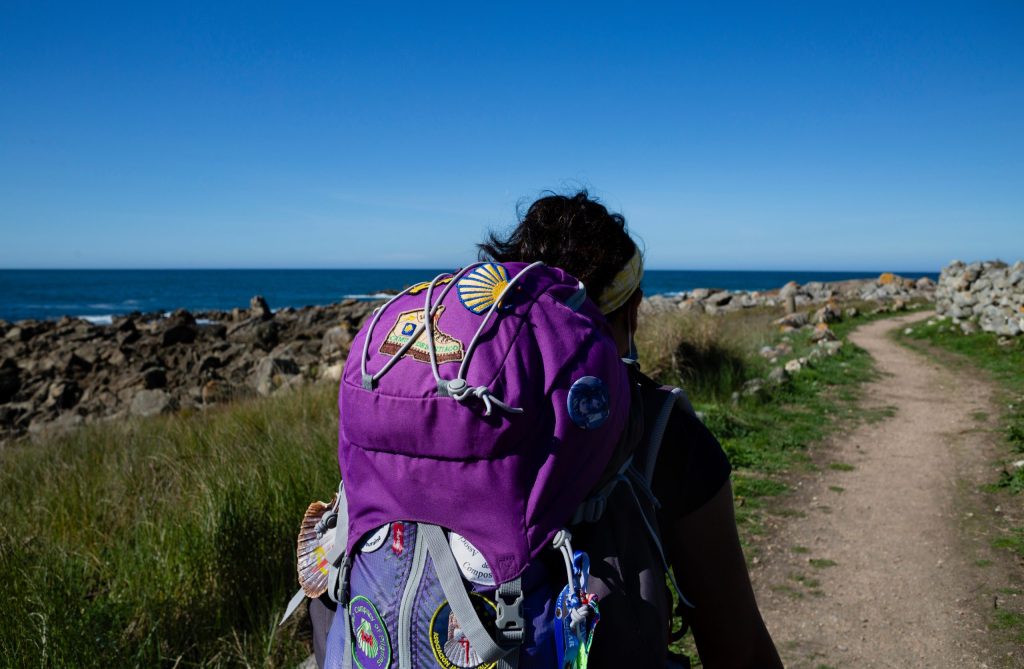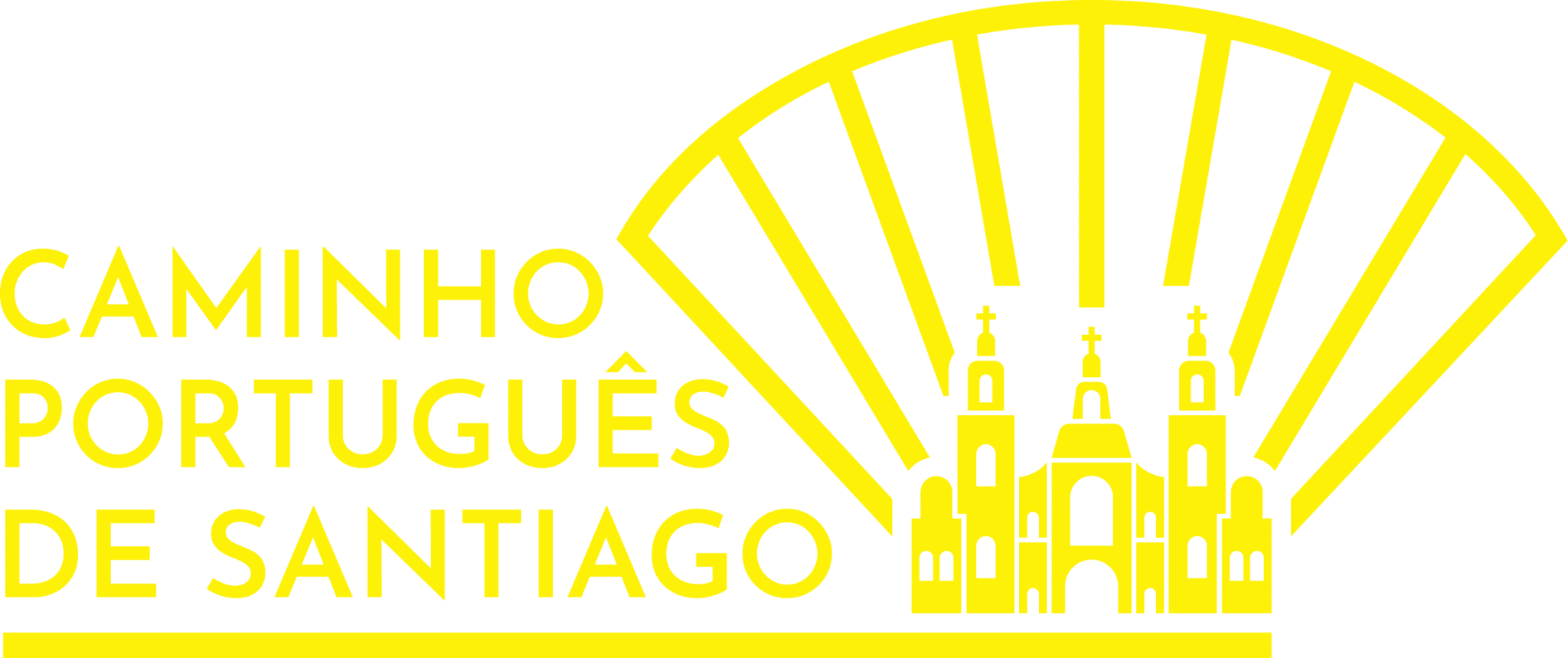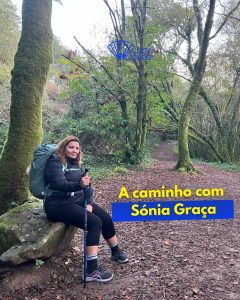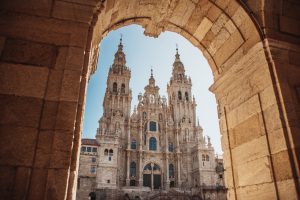Going on pilgrimage in the permanent company of the ocean is a privilege for those who follow the Portuguese Coastal Path, via Senda Litoral. A modern variation on the better-known Central Way, it starts in Porto and takes just 12 days to complete. However, like all ancient trails, this one is full of twists and turns. Find out more about this stunning crossing in this article!

What is the Portuguese Coastal Path?
Com uma distância de 280 quilómetros, podes fazer o Caminho Português da Costa pela Senda Litoral, em 12 dias. Apesar da travessia à beira-mar ter sido certificada pelo Estado, esta que aqui referimos é uma variação moderna da aventura portuguesa. Devido a sua crescente popularidade, tem recebido investimentos e incentivos para melhorar a experiência dos peregrinos, tornando este trajeto um dos mais interessantes a palmilhar, em Portugal.
The Lusitanian version was an important route in medieval times. However, one of the comments we've heard, while walking the trail between Caminha and A Guarda, was: "This is the real Camino!". The truth moves through shifting sands in this modern variant, but this is also a way of demonstrating the pride of the towns by the sea in "their" route.
Our stretch along the Atlantic begins in Porto, always at the Cathedral, and passes through Matosinhos, Maia, Vila do Conde, Póvoa de Varzim, Esposende, Viana do Castelo and Caminha, where it finally splits in two.
So, if you didn't already know, from Caminha, you can choose to take the boat to A Guarda or continue in Portugal to Valença, joining up earlier with the Central Path. If you want to continue along the Galician coast, read on!
Take care on the Portuguese Coastal Path
You can do the Portuguese Coastal Path in 12 days, but there are a few things you need to bear in mind. Because it's so close to the beach, you'll need to bring a hat, water and, most importantly, sunscreen.
This is because the sand reflects the light and, even if it doesn't seem like it, you become more susceptible to scalding. Another issue is walking on the sand. For many hours, you'll be side by side with the beach. So even if you're on the walkways, on windy days the air will carry sand onto them, creating difficulties on the ground.
You'll feel like you're crossing a steep mountain! So get ready. Perhaps training on the beach closest to home isn't such a bad idea when it comes to fitness. If you want to know more about this, read our article!
In addition, despite the investments made in recent years, the Portuguese Coastal Way has less infrastructure than the Central Way. In the lower months, such as May, September or October, this may not be a problem, as there is room for all the pilgrims. However, in the summer, you may find the ancient trail a little "crowded".
If this is the case, it's best to take precautions by planning all the stages well and booking into the albergues as soon as possible. You can use our website to find out about the best places.
For now, continue with this article for a description of each of the 12 days it takes to make the Atlantic journey.
Stages for walking the Portuguese Coastal Path along the Senda Litoral.
Day 1) Porto-Vila Chã.
The first stage along the coast begins in Porto and ends in the small fishing village of Vila Chã. From the Cathedral in the city of Porto, you'll glide down to the banks of the Douro River and follow its blue waters, which will be your guide for this journey that's about to begin.
The path is flat and, of all the days, it's the easiest to get started on without too much difficulty. You should pay attention to the proximity of the sea and make sure you wear sunscreen.
Day 2) Vila Chã - Póvoa de Varzim
This is the shortest leg of the journey and for good reason. Over the next few days, the hikes will be longer, so you'll need to rest your feet when you get the chance. What's more, you'll be passing through Vila do Conde, one of Portugal's most picturesque towns.
Most of the route here is via footbridges. The wind is the most complicated attribute for those who take this route. Glide down to Póvoa and take advantage of the night to rest and stroll around the city.
Day 3) Póvoa do Varzim - Marinhas
On the Póvoa do Varzim - Marinhas stage, you'll be right on the sea, leaving Póvoa de Varzim, and that's how you'll continue for most of the route. Once again, you'll have to pay close attention to the wind and the proximity to the sea, as it makes it easier to get sunburned.
This stage also includes iconic moments on the Camino de Santiago Costa, such as the photogenic windmills of Apulia, which deserve a moment to be observed.
Day 4) Marinhas - Viana do Castelo
The Marinhas - Viana do Castelo stage takes you away from the sea, towards the sacred mountains of the ancient route. Although not difficult, a few climbs after the Church of Santiago in Castelo de Neiva may make your twins complain a little at the end of the day, but nothing out of the ordinary.
When you miss walking by the sea, just look around. There, from the top, you can see a glimpse of the wonderful Atlantic Ocean, which calls out to all pilgrims at this stage of the route. However, make the most of this journey into the deep green of nature. There are pilgrim secrets in every building.
When you arrive in Viana do Castelo, cross the bridge and head towards the city. If you want to rest for a day, there are monuments to delight you, such as the Interpretive Center of the Portuguese Coastal Path or, if you still have the strength, climb the 659 steps of the Santa Luzia staircase and visit the Brotherhood of the same name.
Day 5) Viana Do Castelo - Caminha
This is one of the longest stages of the next few days and, until you reach Vila Praia de Âncora, it's uphill all the way. Here, you'll see small Portuguese villages with a unique charm that is irresistible to lovers of this corner of the seaside.
The arrival in Vila Praia de Âncora is downhill and brings you closer to the sea once again. Here, after a few kilometers, we have one of the most beautiful moments of our entire route. After an encounter with the Chapel of Santo Isidoro, you'll always be leaning against the ocean, close to the boulders of yesteryear, watching the majestic mountains that you'll cross in a few moments. Walking, then, is a poorly kept secret for hikers, as it has everything you need for a restful night's sleep. It's a case of saying, hike for hikers.
Day 6) Caminha - Porto Mougás
The Caminha - Porto Mougás stage is a breathtaking adventure from start to finish. It starts differently, as you have to take a boat to Galicia. If you're absent-minded, just ask the people in the hostels or where you're staying and they'll tell you the number or even book the boat (which takes up to 4 people).
After that, you enter Spain. If up until now the journey had been based on pure improvisation, choosing the most desirable route every day, now it's certain and straight.
Despite the beauty of the cities and nature combined with the sea, you'll have long periods on the roads, which can make you feel unsafe during your walk.
Day 7) Porto Mougás - Saians
The Porto Mougás - Saiáns stage is an adventure yet to be discovered. Starting in the small town, you follow a quiet road until you come to a dirt climb. Here, the day's adventure progresses.
From here, it's uphill, where you'll see one of the most breathtaking views of the route so far, and you'll continue on to Baiona. This fishing town, where many people stay, is a great place to rest and see the local people.
From here, you can choose which route to take. Whether you want to look out to sea, along the beaches, or head inland. Saiáns is an excellent way to end the day, as the people of this neighborhood are dynamic and often hold events where all pilgrims are welcome.
Day 8) Saians - Redondela
The Saiáns - Redondela stage is the last stage before the path is unified with the Portuguese Central Way. Although it's long and strenuous, you'll be captivated by beautiful cities and monuments.
Vigo, even though it's Galicia's largest city, makes it comfortable in this region, especially for pilgrims who miss the atmosphere of the metropolis. However, it's not for everyone.
Leaving the port city is a return to the origins of the Camino, with lots of green spaces and the wonderful neighborhood of Teis, with an emotional connection straight from the heart of the mountain.
The arrival in Redondela is in what, for many, is one of the most beautiful landscapes on the route.
Day 9) Redondela - Pontevedra
The Redondela - Pontevedra stage, after the great walk of the previous day, is a refreshing ride, with the best the route has to offer. Just outside the town, there are trails that lead you through small villages and Galician woods. The landscape remains calm until you reach Arcade, a crossing point for many hikers who are amazed by the imposing Sampaio Bridge. This place, where every nook and cranny tells the story of Galicia and Santiago, is one of those treasures hidden in front of our feet, forgotten between two of the main cities on the route. However, if you're tired or just fancy a snack, you should know that this is where the best oysters in all of Iberia are said to be eaten. For seafood lovers, that's no small feat.
From here, the path thickens. Entering a forest path, you'll climb until you reach an altitude of 147 meters. What you gain in natural beauty, you lose in calories.
Pontevedra is one of the most iconic cities on the Portuguese route. Don't miss the chance to see the many monuments here and the thousand-year-old churches set up in the center of a car-free city.
Day 10) Pontevedra-Caldas de Reis
The Pontevedra - Caldas de Reis stage is a pleasant journey, with no major difficulties. After leaving via the Burgo Bridge, the crossing becomes simple, with no noteworthy elevations and an excellent selection of churches and other religious monuments.
The vines surround the houses and accompany you along the route which, due to its humility, gives you the time and desire to enjoy every step. Before meeting up with the N-550, you come to an area of waterfalls. It's a short detour that's worth the time.
Then you're soon in Caldas de Reis. You're greeted by a gentle village and a town center where you feel like resting and pondering the Way you've traveled so far.
Day 11) Caldas de Reis - Padron
The Caldas de Reis - Padrón stage is, for many, one of the most beautiful of the entire Camino de Santiago de Camino de Santiago. In these final moments of the pilgrimage, it's normal to see more and more people along the routes, more accommodation and, above all, more shops on the roads that take you to the Galician capital.
With a small climb, this journey doesn't present any major difficulties. Even the locals walk these roads as exercise for the whole family.
The next thing you know, you're in the middle of the Spanish forest, with ancient Roman roads to get you into the spirit of the first pilgrims. As a culmination, Padrón looks like a replica of a city from the ancient empire of Caesar Augustus, with its brown tones and architecture that is different from the rest of the region. It's time to sit down and order the peppers that take their name from the town - Padrón.
Day 12) Padrón-Santiago de Compostela
The Padrón - Santiago de Compostela stage is a return to urban trails designed with cars in mind. After the Roman city, you start making your way through the last forest you'll come across. The rest of the route is back on the road that has accompanied you over time: the N-550.
The journey takes place in a space of social transformation, between villages and modern cities such as O Milladoiro.
Arriving in the longed-for capital is a whirlwind of emotions and feelings, always in the company of pilgrims, visitors and inhabitants of the Galician capital. As you follow a straight line, you are greeted by the Chapel, Obradoiro Square and the end of the adventure.
It's time to reap the rewards of the journey, rest up and start planning the next one.
So you can do the Portuguese Coastal Path through Senda Litoral in 12 days
The journey along the coast, whether it's the coastal path or the traditional one, is one of immense beauty and slow pleasure with every step. Now we want to hear about your experience! Have you done it before? Are you thinking of doing it? Tell us all about it!








The day is almost here. I'll be taking this route in May. Looking forward to it ☺️